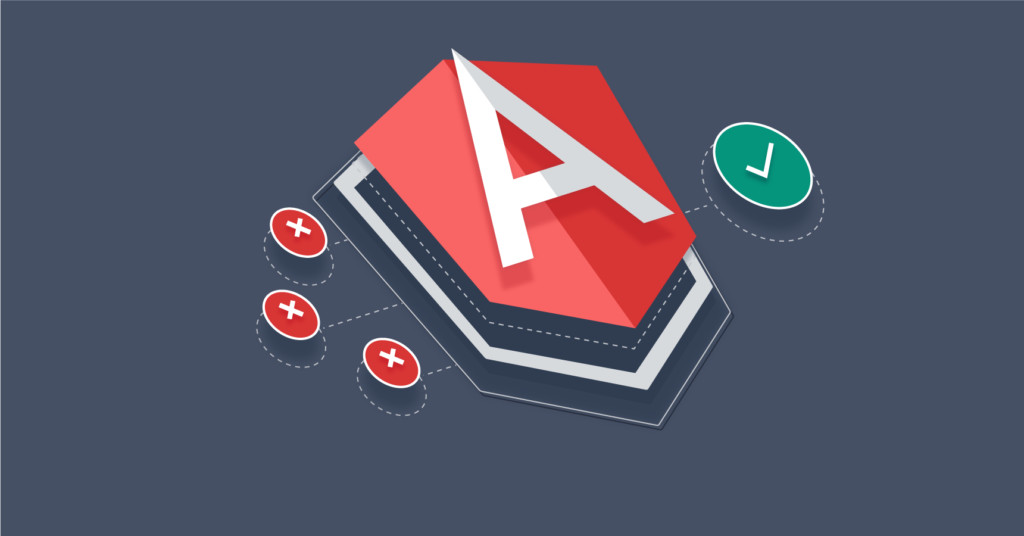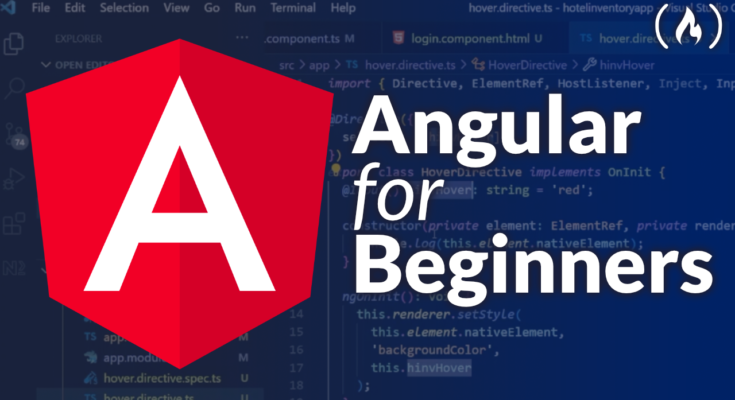Angular is a popular JavaScript framework that helps developers build dynamic web applications. It is maintained by Google and a community of developers and is widely used for building single-page applications (SPAs). Learning Angular as a beginner can be an exciting journey that opens up a world of possibilities in web development. This guide will provide you with a comprehensive overview of how to get started with Angular and become proficient in building web applications with it.
“Learning Angular is not just about mastering a framework, it’s about embracing a mindset of continuous improvement and innovation in web development.”
Understanding the Basics
What is Angular?

Angular is a front-end framework for building web applications using HTML, CSS, and TypeScript. It provides a set of tools and libraries that simplify the development process and help developers create dynamic, responsive applications. Angular is based on the MVC (Model-View-Controller) architecture and offers features like data binding, dependency injection, and routing.
Key Concepts and Terminology
- Components: Angular applications are built using components, which are reusable building blocks that encapsulate HTML templates, CSS styles, and application logic.
- Modules: Modules in Angular are used to organize the application into cohesive blocks of functionality. Each Angular application has at least one module, known as the root module.
- Services: Services in Angular are used to encapsulate reusable logic that is independent of any specific component. Services are typically used to communicate with backend APIs or perform other common tasks.
Setting Up Your Development Environment
Installing Node.js and npm
Node.js is a JavaScript runtime that allows you to run JavaScript code outside of a web browser. npm (Node Package Manager) is a package manager for Node.js that allows you to easily install and manage dependencies for your projects. To install Node.js and npm, you can download the installer from the official Node.js website and follow the installation instructions.
Installing Angular CLI
Angular CLI (Command Line Interface) is a command-line tool that helps you scaffold, build, and maintain Angular applications. To install Angular CLI, you can use npm to install it globally on your system. Once installed, you can use the ng command to create new Angular projects, generate components, services, and more.
Creating a New Angular Project
To create a new Angular project using Angular CLI, you can use the ng new command followed by the name of your project. This will create a new directory with the specified name and scaffold a new Angular project inside it. You can then use the ng serve command to start a development server and preview your application in a web browser.
Learning the Fundamentals
Understanding Angular Components and Their Role
Components are the building blocks of Angular applications. They encapsulate the application logic and UI elements into reusable units. Each component in Angular consists of a TypeScript class that defines the component’s behavior, an HTML template that defines the component’s UI, and a CSS file that defines the component’s styles.
Working with Templates and Data Binding
Templates in Angular are used to define the UI of a component. Angular uses data binding to connect the component’s TypeScript class with its template, allowing you to display dynamic data in your application. There are several types of data binding in Angular, including interpolation, property binding, event binding, and two-way binding.
Managing Application State with Services
Services in Angular are used to encapsulate logic that is independent of any specific component. They are typically used to communicate with backend APIs, manage application state, or perform other common tasks. Services are singletons, meaning that there is only one instance of each service in the application.
Routing and Navigation Basics
Routing in Angular allows you to build SPAs with multiple views. You can define routes for different parts of your application and use the Angular Router to navigate between these routes. The Angular Router provides features like lazy loading, route guards, and parameterized routes to help you build complex navigation scenarios.
Building Your First Angular App
Creating a Simple Application
To create a simple Angular application, you can use Angular CLI to generate the necessary files and code scaffolding. Once you have generated your application, you can start adding components, services, and other features to build your application.
Adding Routing to Navigate Between Different Views
Routing in Angular allows you to define routes for different parts of your application and navigate between them using the Angular Router. You can define routes in your application’s root module and use the RouterLink directive in your templates to create links that navigate to different routes.
Styling Your App with CSS or a CSS Framework
Angular allows you to style your application using CSS or a CSS framework like Bootstrap. You can add styles to your components using the style URLs property in the component’s decorator, or you can use global styles by adding them to the styles.css file in the src folder of your project.
Also Read: What is ASP.NET Core Used For?
Advanced Topics and Best Practices
Using Angular Forms for User Input
Angular provides a powerful forms module that allows you to create forms in your application and handle user input. You can use template-driven forms or reactive forms to build forms with Angular, depending on your requirements.
Working with HTTP to Fetch Data from a Server
Angular provides a built-in HTTP Client module that allows you to make HTTP requests to a server to fetch data. You can use the HTTP Client module to send GET, POST, PUT, and DELETE requests, and handle the responses using observables.
Using Angular CLI Commands Effectively
Angular CLI provides a set of commands that can help you scaffold, build, and maintain your Angular projects. Some of the most commonly used CLI commands include ng new, ng generate, and ng serve.
Best Practices for Organizing Your Angular Code
To keep your Angular codebase clean and maintainable, it’s important to follow best practices for organizing your code. This includes using Angular modules to organize your application into feature modules, using services to encapsulate reusable logic, and following a consistent naming convention for your files and folders.
Learning Resources and Further Reading
Recommended Tutorials, Courses, and Books for Learning Angular
There are many resources available online and in print for learning Angular. Some recommended tutorials, courses, and books for learning Angular include:
- Angular documentation: The official Angular documentation is a great resource for learning Angular. It provides detailed explanations of Angular concepts and features, along with examples and best practices.
- Angular University: Angular University offers a range of courses on Angular development, from beginner to advanced levels. Their courses cover topics like Angular fundamentals, advanced Angular features, and building real-world Angular applications.
- Udemy: Udemy offers a variety of courses on Angular development, ranging from beginner to advanced levels. Some popular Angular courses on Udemy include “Angular – The Complete Guide” and “Angular Crash Course for Busy Developers“
Angular Documentation and Official Resources
The Angular documentation is a comprehensive resource for learning Angular. It provides detailed explanations of Angular concepts and features, along with examples and best practices. In addition to the documentation, the Angular team also maintains an official blog and YouTube channel where they post updates, tutorials, and other helpful resources.
Conclusion
In conclusion, learning Angular as a beginner can be a rewarding journey that opens up a world of possibilities in web development. By following the structured approach outlined in this article, you can build a strong foundation in Angular and become proficient in creating dynamic and interactive web applications.
Starting with the basics, such as understanding the core concepts of Angular, including components, modules, services, and directives, is crucial. As you progress, exploring more advanced topics like routing, forms, and HTTP communication will further enhance your skills.
Practicing regularly and working on projects, whether small personal ones or contributions to larger open-source projects, will help reinforce your understanding and showcase your expertise to potential employers or clients. Additionally, staying updated with the latest trends and best practices in Angular development through online resources, forums, and communities will keep you ahead in the field.
Remember, learning Angular is a continuous process, and staying curious and open to new ideas will help you grow as a developer. With dedication and perseverance, you can become a proficient Angular developer and build exciting web applications that make a difference.
FAQ
Q: What is Angular?
Angular is a popular open-source framework maintained by Google for building web applications. It allows developers to create dynamic, single-page applications (SPAs) using HTML, CSS, and TypeScript.
Q: Is Angular suitable for beginners?
Yes, Angular can be suitable for beginners, especially those with a basic understanding of HTML, CSS, and JavaScript. The framework provides comprehensive documentation and resources to help beginners get started.
Q: What are the prerequisites for learning Angular?
While not mandatory, having a basic understanding of HTML, CSS, and JavaScript can be beneficial. Familiarity with TypeScript, a superset of JavaScript, is also recommended as Angular is written in TypeScript.
Q: How do I start learning Angular?
To start learning Angular, you can begin by exploring the official Angular documentation and tutorials available on the Angular website. Additionally, there are many online courses, tutorials, and books dedicated to teaching Angular for beginners.
Q: What are the key concepts to understand in Angular?
Some key concepts to understand in Angular include components, modules, services, directives, dependency injection, routing, forms, and HTTP communication.
Q: How can I practice Angular?
You can practice Angular by working on coding exercises, building small projects, and contributing to open-source projects. Online coding platforms, tutorials, and courses often provide hands-on exercises and projects for practice.
Q: What resources are available for learning Angular?
There are numerous resources available for learning Angular, including official documentation, tutorials, online courses (such as Udemy, Coursera, and Pluralsight), books, forums (such as Stack Overflow and Reddit), and developer communities.
Q: How long does it take to learn Angular?
The time it takes to learn Angular can vary depending on your prior experience with web development and the time you dedicate to learning. With consistent practice and dedication, beginners can acquire a basic understanding of Angular within a few weeks to a few months.
Q: What are the career prospects for Angular developers?
Angular is widely used in the industry, and skilled Angular developers are in high demand. Learning Angular can open up career opportunities in web development, including roles such as front-end developer, full-stack developer, and Angular specialist.
Q: How can I stay updated with the latest developments in Angular?
To stay updated with the latest developments in Angular, you can follow the official Angular blog, subscribe to newsletters, join online communities and forums, attend conferences and meetups, and follow Angular experts on social media platforms like Twitter and LinkedIn.




